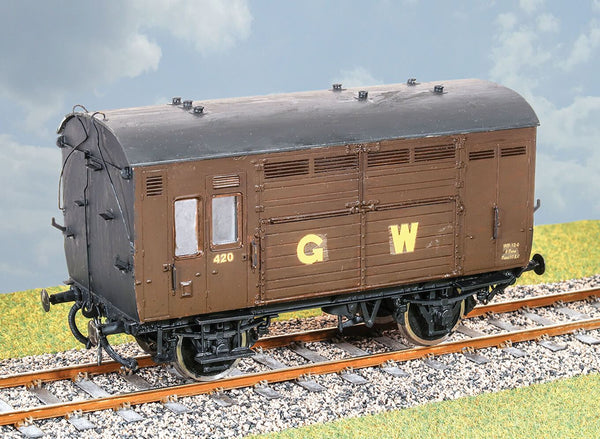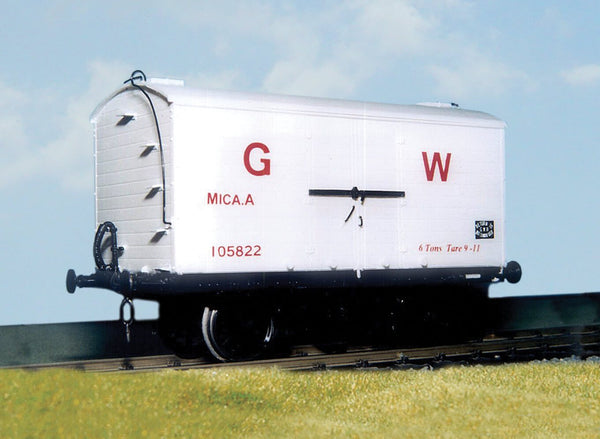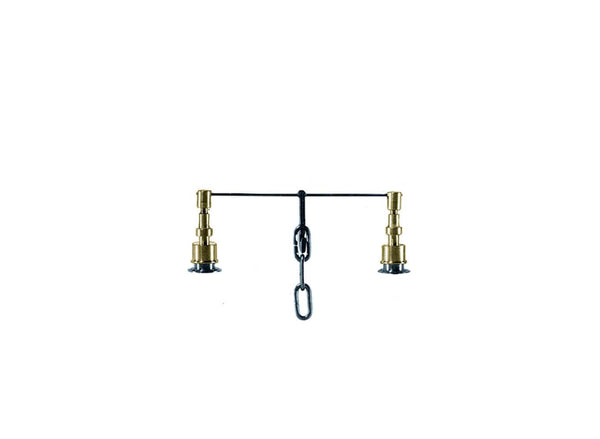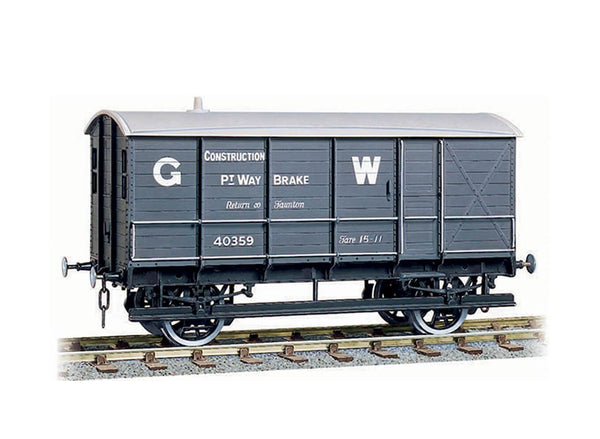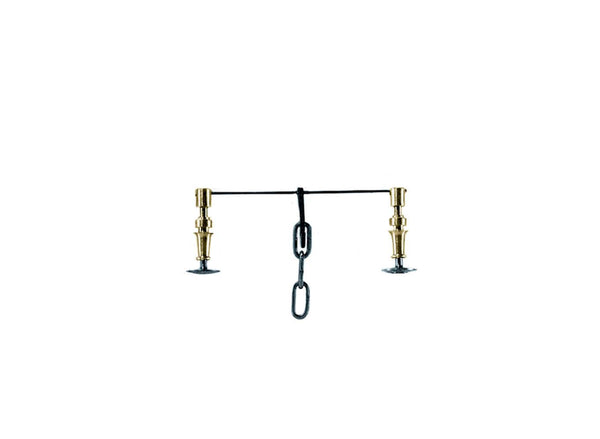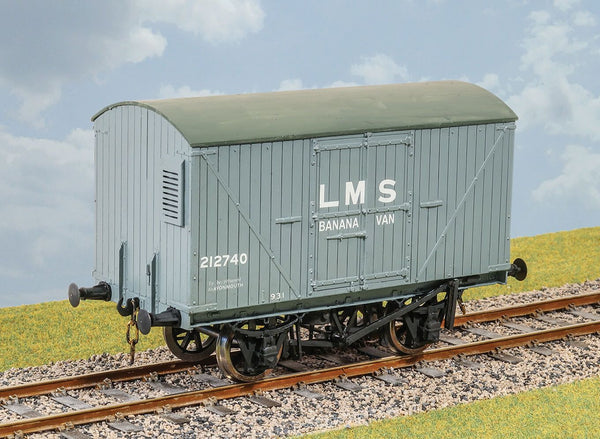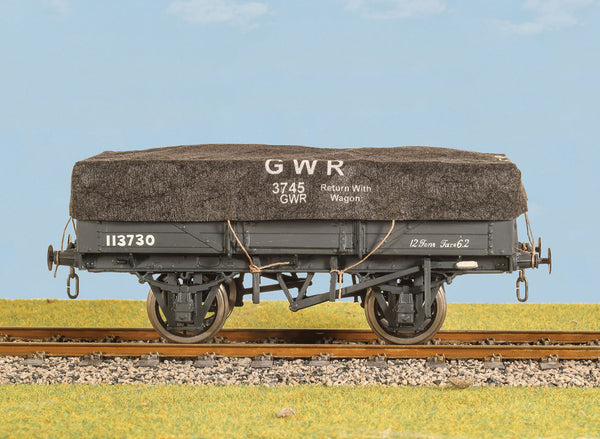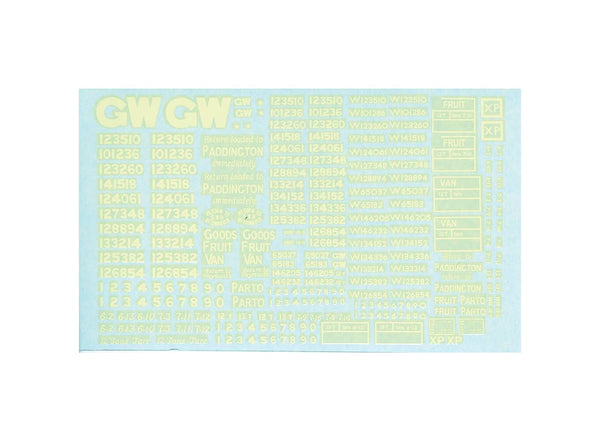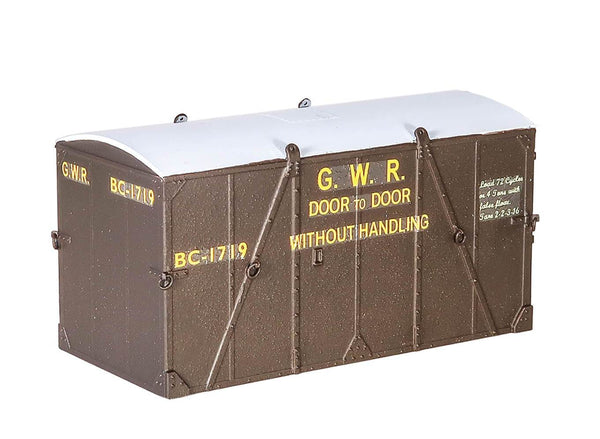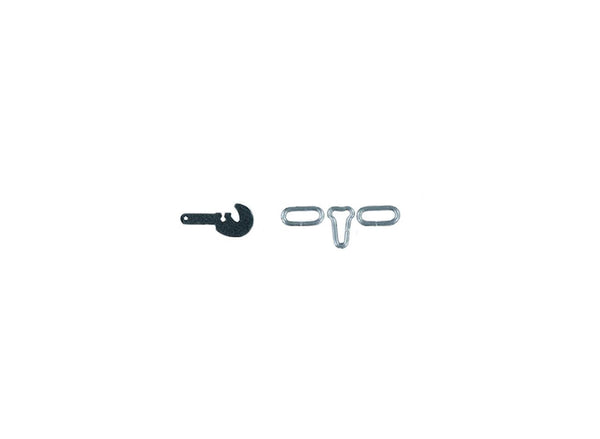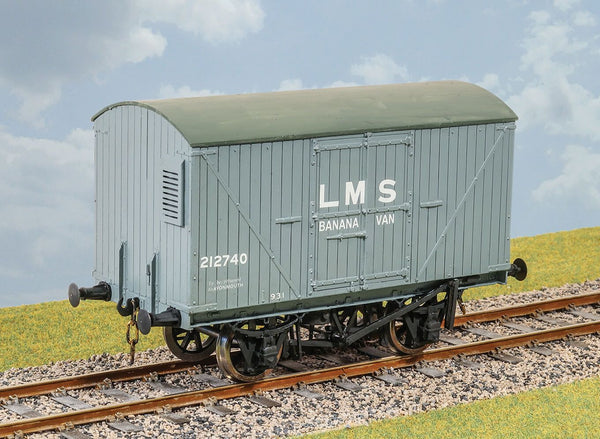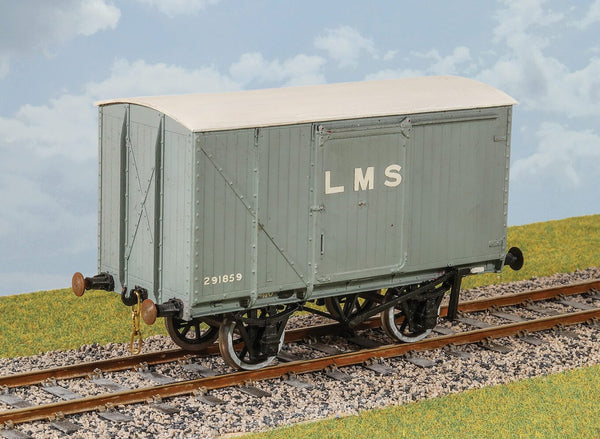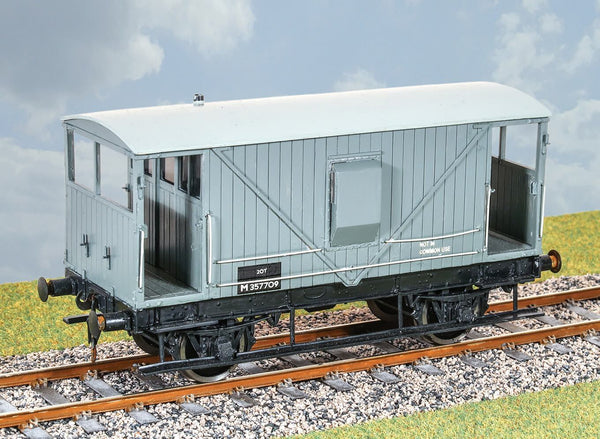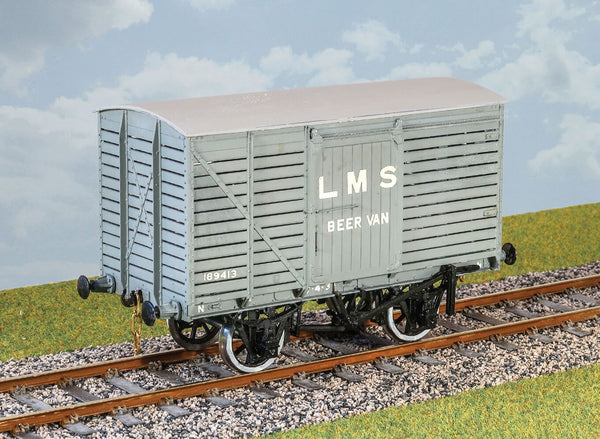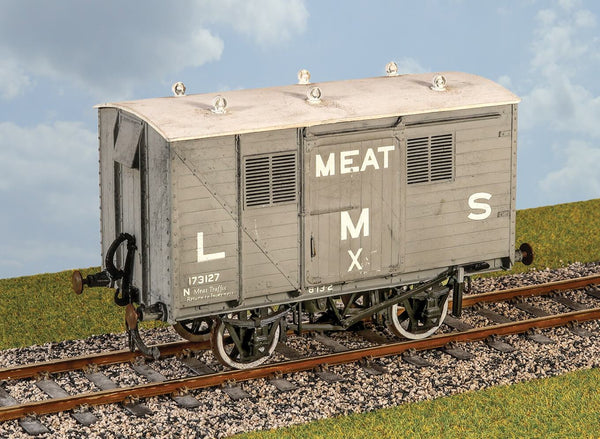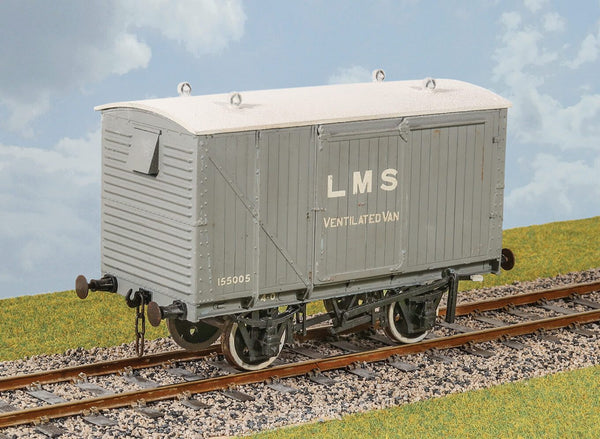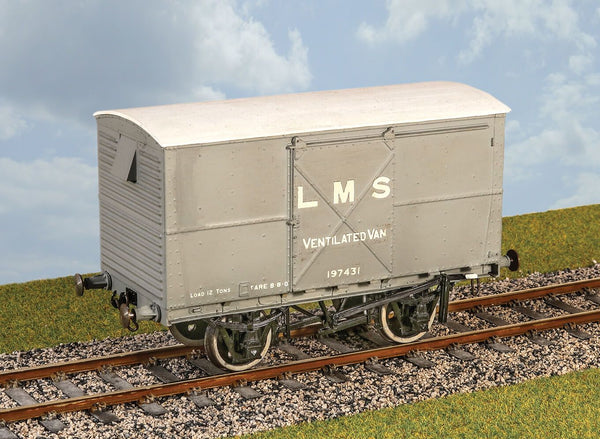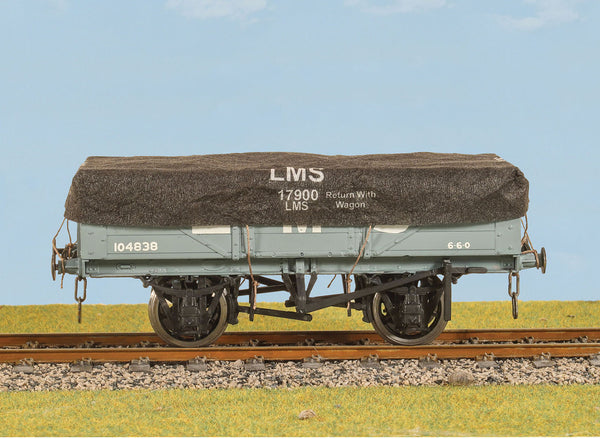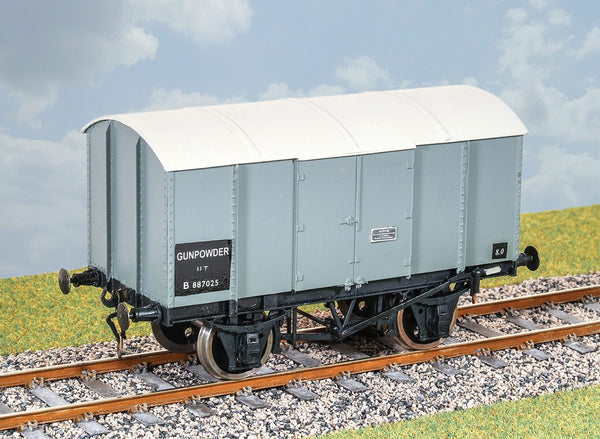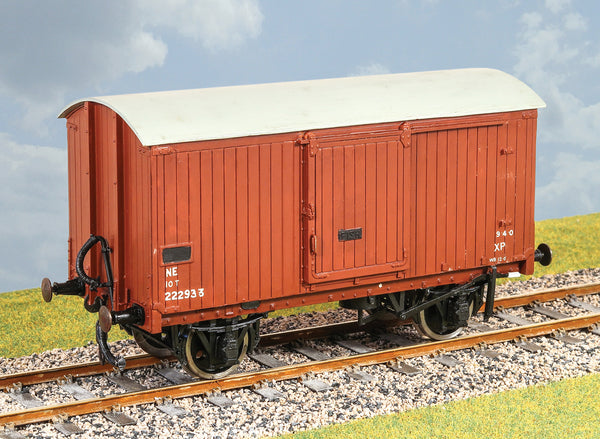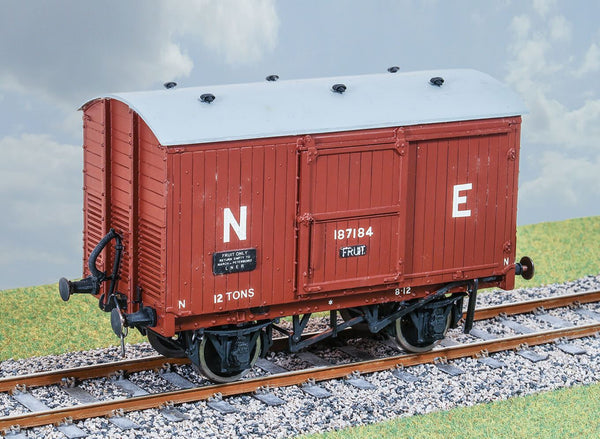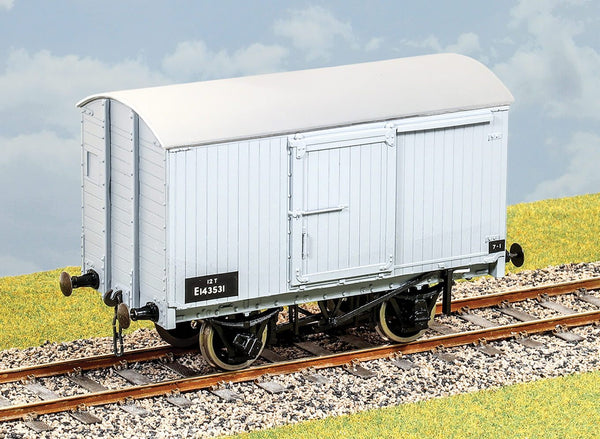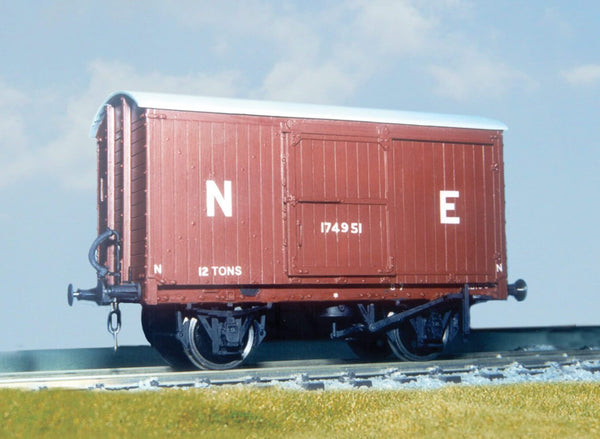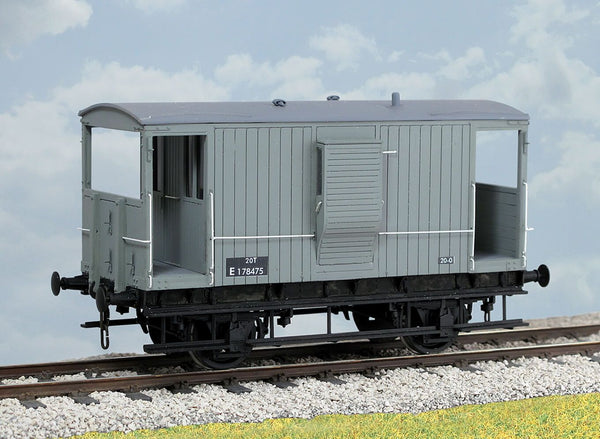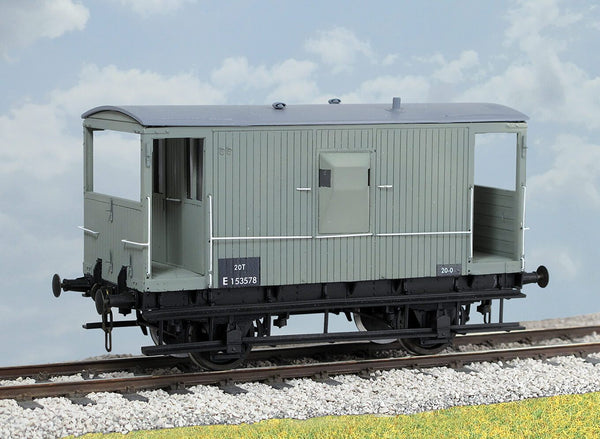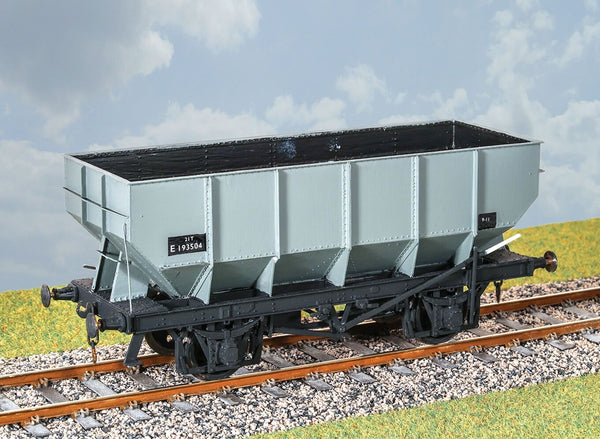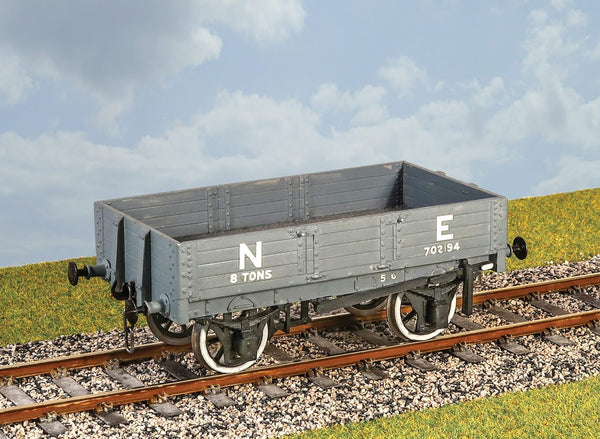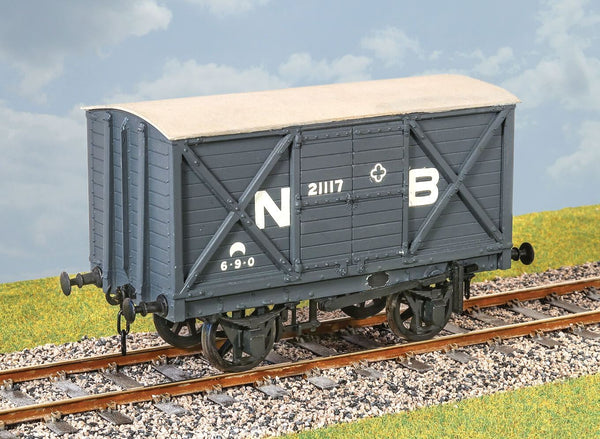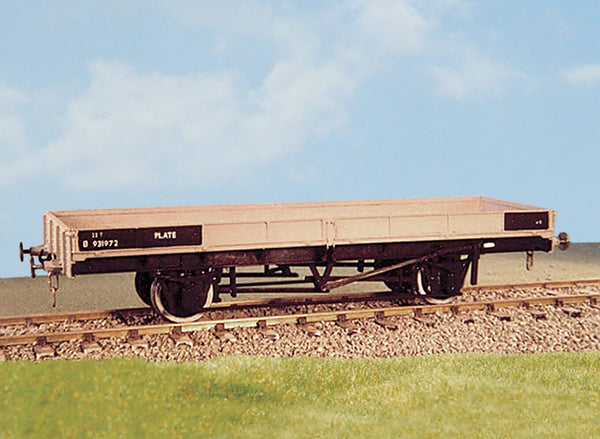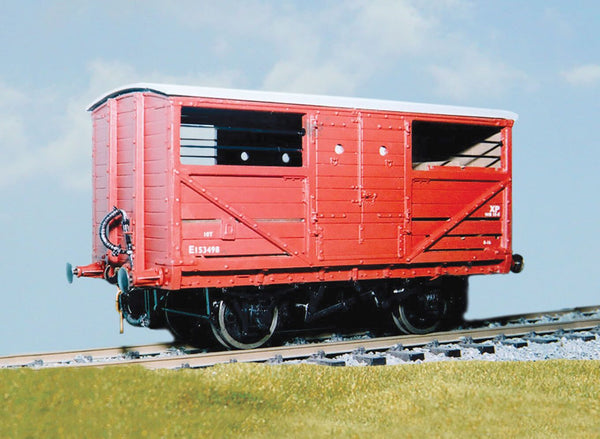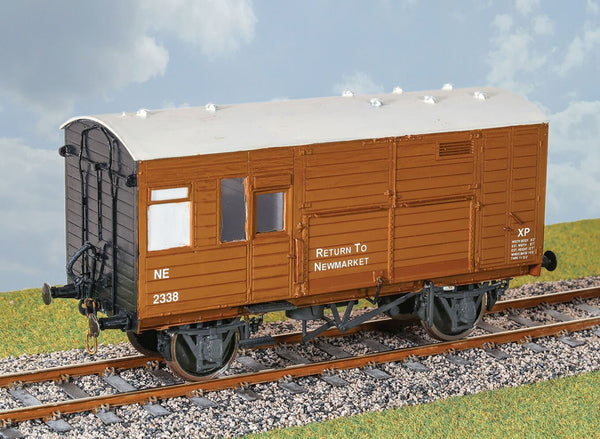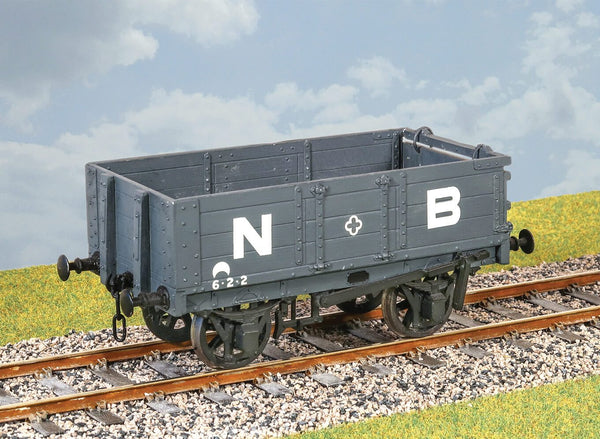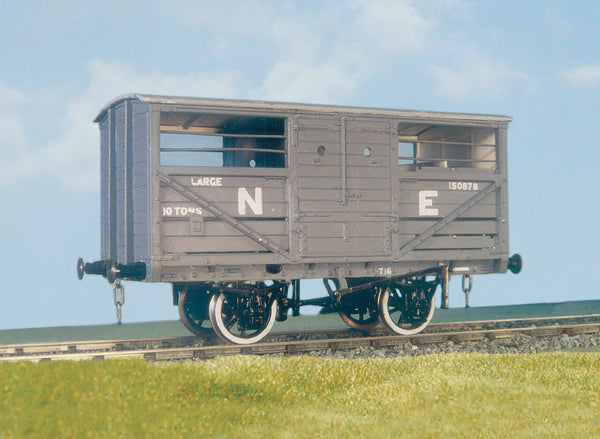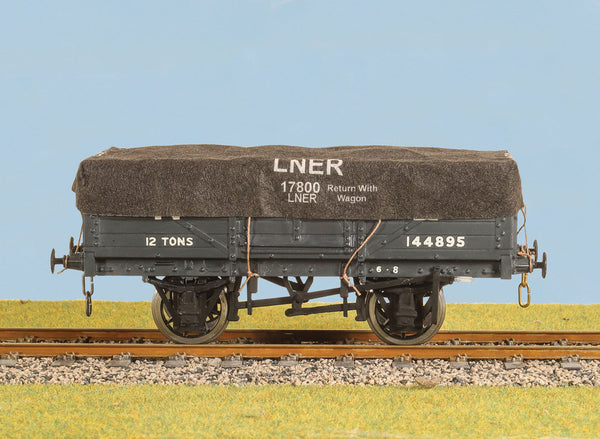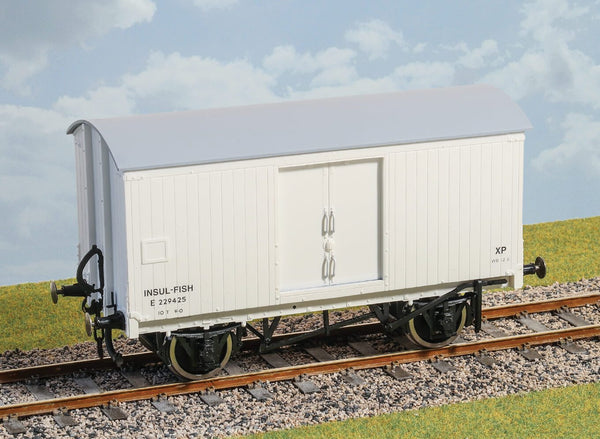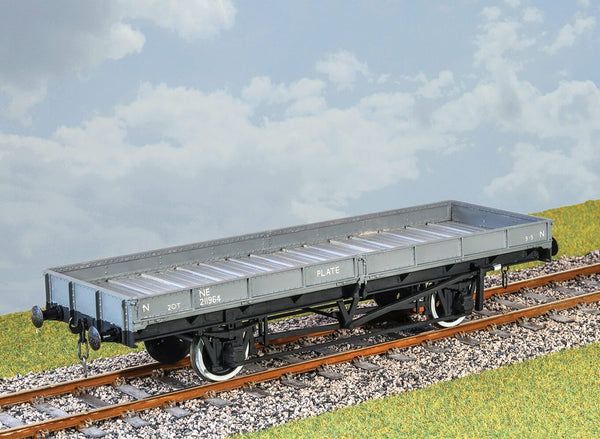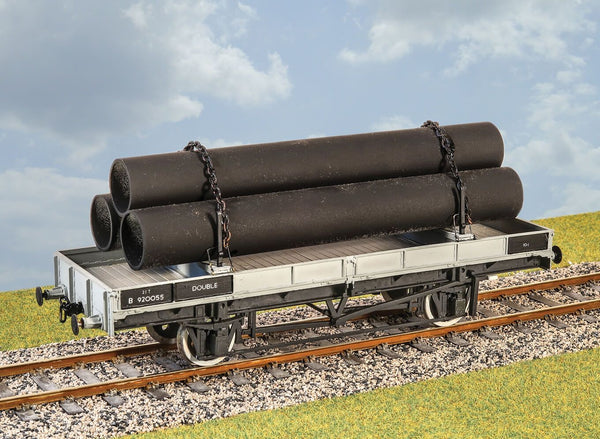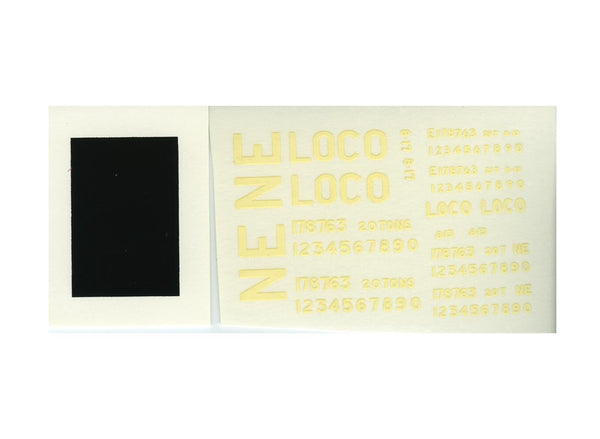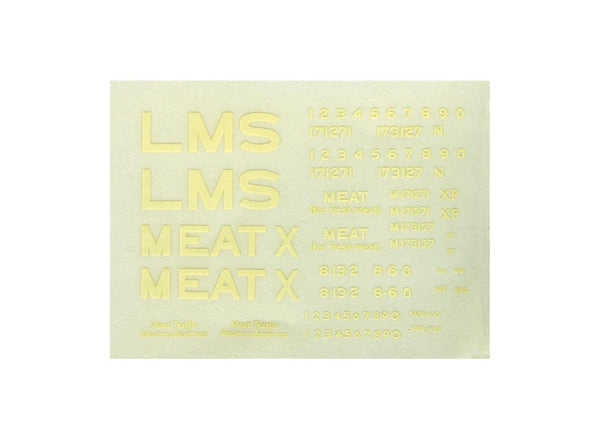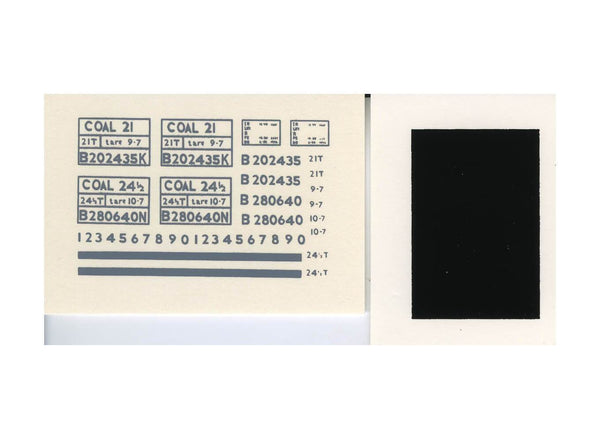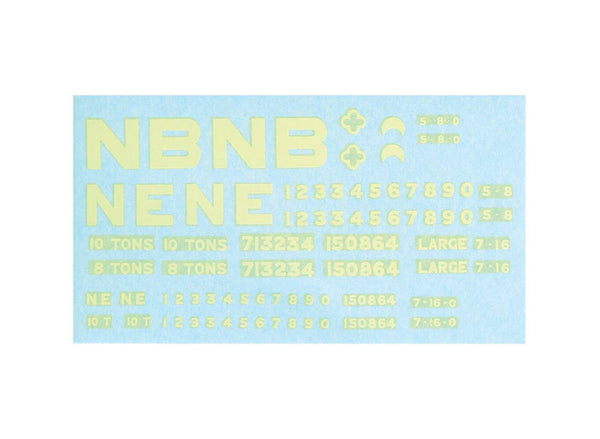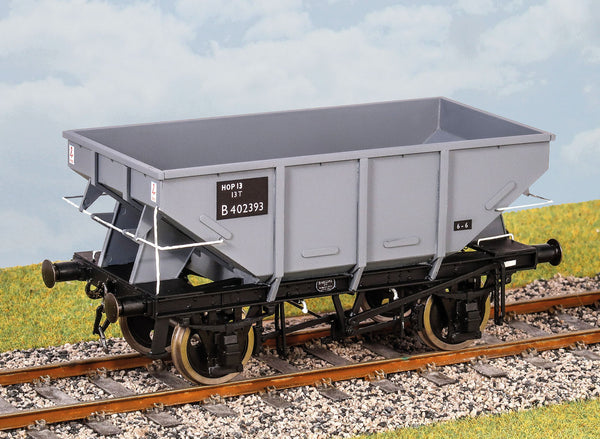BROWSE PECO PRODUCTS
Browse through our complete product portfolio.
121 Products Found
GWR Container Wagon with 'B' Cont.
This was the standard GWR container wagon (CONFLAT) from 1933 to 1939. Examples lasted into the 1970s. The container supplied with this kit was of a type used to convey bicycles, and is also available separately (PS74). Wagon and container transfers for GWR and BR. These finely moulded plastic wagon kits come complete with pin point axle wheels and bearings, 3 link couplings and transfers. This kit is supplied with pre-coloured moulded parts although painting can improve the appearance.. Additional parts to enable the vehicle to be modelled incorporating modifications made to the prototypes during their working life are included where appropriate.
GWR Horse Box Wagon
300 of these vehicles were built in the 1920s, lasting into the 1950s and 60s. They were used to carry horses to racecourses and stables, often marshalled into passenger and parcels trains. Transfers for GWR and BR. These finely moulded plastic wagon kits come complete with pin point axle wheels and bearings, 3 link couplings and transfers. This kit is supplied with pre-coloured moulded parts although painting can improve the appearance. Additional parts to enable the vehicle to be modelled incorporating modifications made to the prototypes during their working life are included where appropriate.
GWR Mica Insulated Van
In 1929, 54 of these vans were built to carry meat in chilled conditions. The hoppers inside were filled with “Drikeld” solid carbon dioxide through characteristic roof vents. They lasted into the 1960s, some being converted into “TEVAN” vans (PS48). Transfers for GWR and BR. These finely moulded plastic wagon kits come complete with pin point axle wheels and bearings, 3 link couplings and transfers. This kit is supplied with pre-coloured moulded parts although painting can improve the appearance. Additional parts to enable the vehicle to be modelled incorporating modifications made to the prototypes during their working life are included where appropriate.
GWR Parallel Shank Buffers
0 Gauge Chassis kits and Accessories for scratchbuilders and kit modification. This pack contains sufficient components to assemble four buffers and two 3- link couplings. Three-link chain couplings, with no means of drawing the wagons together, were used to form the peculiarly British "loose coupled" freight train: since such trains were not fitted with an automatic through-train braking system there were no pipes to connect between the vehicles. Control of the train was assisted by the guard's van at the rear of the train, or in certain cases a series of vans spaced along the train, which were used to keep the couplings taut and therefore also helped prevent snapped couplings. Such trains travelled at low speeds and were finally phased out in the 1970s.
GWR Permanent Way Brake Van
The GWR built these special brake vans between 1890 and 1900, for use on track maintenance trains. They have end windows instead of the usuall verandah. Easy to assemble from the correctly coloured injection moulded components (no painting necessary). Kits include Transfers. Buffers are sprung and 3-link couplings are included on all models, while the BR wagons also feature working axlebox springs and moveable brake levers. Fine scale metal tyred wheels on pin-point axles supplied, spoked for the GWR wagons or 3-hole disc for the BR types. Fully illustrated instructions included.
GWR Tapered Shank Buffers
0 Gauge Chassis kits and Accessories for scratchbuilders and kit modification. This pack contains sufficient components to assemble four buffers and two 3- link couplings. Three-link chain couplings, with no means of drawing the wagons together, were used to form the peculiarly British "loose coupled" freight train: since such trains were not fitted with an automatic through-train braking system there were no pipes to connect between the vehicles. Control of the train was assisted by the guard's van at the rear of the train, or in certain cases a series of vans spaced along the train, which kept the couplings taut and therefore also helped prevent snapped couplings. Such trains travelled at low speeds and were finally phased out in the 1970s.
GWR Tevan Goods Van
These vans were converted from Mica Insulated Vans in 1938 (see PS49). They carried tea and coffee from the Lyons depot at Greenford into the 1960s. They featured a zinc-lined body. Transfers for GWR and BR. These finely moulded plastic wagon kits come complete with pin point axle wheels and bearings, 3 link couplings and transfers. This kit is supplied with pre-coloured moulded parts although painting can improve the appearance. Additional parts to enable the vehicle to be modelled incorporating modifications made to the prototypes during their working life are included where appropriate.
GWR Wagon Tarpaulin
O Scale GWR wagon tarpaulin, produced from a material that convincingly replicates the texture and look of canvas tarpaulins once commonly used on open wagons, to protect the contents underneath. Each product contains 3 tarpaulins.
GWR/BR Box and Fruit Van Transfers (Waterslide)
Transfers (Waterslide) GWR/BR (from Kits PS26-29)
GWR/BR Open and Box VanTransfers (Waterslide)
Transfers (Waterslide) GWR/BR (from Kits PS23-24)
GWR/BR ‘B’ Container
Period Transfers included. A Conflat, road vehicle load, or as a scenic accessory for the Goods Yard.
Instanter Couplings
0 Gauge Chassis kits and Accessories for scratchbuilders and kit modification. This pack contains sufficient components to assemble four pairs of 3- link couplings. The "Instanter" coupling is a development of the standard 3 link coupling. The middle link of the chain is specially shaped so that when lying flat it provides enough slack to make coupling possible, but when this middle link is rotated 90 degrees the length of the chain is effectively shortened, reducing the amount of slack to provide closer coupling, to allow the use of train brake pipes without the need to wind a screw. It can also be coupled from the side of the wagons using a shunter's pole; much safer than having to go between vehicles when coupling them together.
LMS 10ton Banana Van
1,000 of these vans were built between 1925 and 1930 to carry ripening bananas from ports to inland warehouses. They were steam heated by means of through pipes from the locomotive. The steam heating equipment was later removed, but the vans lasted into the 1960s. Transfers for LMS and BR. These finely moulded plastic wagon kits come complete with pin point axle wheels and bearings, 3 link couplings and transfers. This kit is supplied with pre-coloured moulded parts although painting can improve the appearance. Additional parts to enable the vehicle to be modelled incorporating modifications made to the prototypes during their working life are included where appropriate.
LMS 12ton Open Goods Wagon
8,500 of this type were built in the 1920s for carrying general goods traffic. It is a Midland Railway-derived design with a steel chassis. As they were classified “common user” they would turn up anywhere on the railway network. Transfers for LMS and BR. These finely moulded plastic wagon kits come complete with pin point axle wheels and bearings, 3 link couplings and transfers. This kit is supplied with pre-coloured moulded parts although painting can improve the appearance. Additional parts to enable the vehicle to be modelled incorporating modifications made to the prototypes during their working life are included where appropriate.
LMS 12ton Van
Built by the LMS, who produced over 2,500 in 1924 – 1926. Midland Railway design with 9-foot steel chassis. Lasted until the early 1960s. Transfers for LMS and BR. These finely moulded plastic wagon kits come complete with pin point axle wheels and bearings, 3 link couplings and transfers. This kit is supplied with pre-coloured moulded parts although painting can improve the appearance. Additional parts to enable the vehicle to be modelled incorporating modifications made to the prototypes during their working life are included where appropriate.
LMS 20ton Goods Brake Van
Developed from a Midland Railway design, 950 of these vans were built between 1927 and 1931. After Nationalisation their use spread to other areas of BR, especially the Eastern Region. A few lasted into the 1990s. Transfers for LMS and BR. These finely moulded plastic wagon kits come complete with pin point axle wheels and bearings, 3 link couplings and transfers. This kit is supplied with pre-coloured moulded parts although painting can improve the appearance. Additional parts to enable the vehicle to be modelled incorporating modifications made to the prototypes during their working life are included where appropriate.
LMS Beer Van
100 vehicles built in 1929, featuring slated sides and ends to keep contents cool! Many worked between Burton On Trent and London St. Pancras. Lasted until 1960s. Transfers for LMS and BR.These finely moulded plastic wagon kits come complete with pin point axle wheels and bearings, 3 link couplings and transfers. This kit is supplied with pre-coloured moulded parts although painting can improve the appearance. Additional parts to enable the vehicle to be modelled incorporating modifications made to the prototypes during their working life are included where appropriate.
LMS Meat Van
400 of these vans were built at Wolverton Works in 1927 and 1930 to carry fresh meat. Would run in express freight trains, but were fitted to work within passenger trains too. Lasted until 1960. Transfers for LMS and BR. These finely moulded plastic wagon kits come complete with pin point axle wheels and bearings, 3 link couplings and transfers. This kit is supplied with pre-coloured moulded parts although painting can improve the appearance. Additional parts to enable the vehicle to be modelled incorporating modifications made to the prototypes during their working life are included where appropriate.
LMS MR Design 20ton Goods Brake Van
849 of these brake vans were built to a Midland railway design, between 1924 and 1927. Despite their early construction, many lasted well into the 1960s, and indeed some went into civil engineer’s service into the 1970s. Transfers for LMS and BR. These finely moulded plastic wagon kits come complete with pin point axle wheels and bearings, 3 link couplings and transfers. This kit is supplied with pre-coloured moulded parts although painting can improve the appearance. Additional parts to enable the vehicle to be modelled incorporating modifications made to the prototypes during their working life are included where appropriate.
LMS Ventilated Van Corrugated Ends
The LMS built 3,450 of these at Wolverton Works in 1929 – 1931. An early example of corrugated steel ends on a van. Lasted into the early 1960s. Transfers for LMS and BR. These finely moulded plastic wagon kits come complete with pin point axle wheels and bearings, 3 link couplings and transfers. This kit is supplied with pre-coloured moulded parts although painting can improve the appearance. Additional parts to enable the vehicle to be modelled incorporating modifications made to the prototypes during their working life are included where appropriate.
LMS Ventilated Van Steel Body
Built for the LMS in 1929-30, 1,000 in total being supplied. There were various detail differences, but this kit represents one of 150 built by Charles Roberts. Transfers for LMS and BR. These finely moulded plastic wagon kits come complete with pin point axle wheels and bearings, 3 link couplings and transfers. This kit is supplied with pre-coloured moulded parts although painting can improve the appearance. Additional parts to enable the vehicle to be modelled incorporating modifications made to the prototypes during their working life are included where appropriate.
LMS Wagon Tarpaulin
O Scale LMS wagon tarpaulin, produced from a material that convincingly replicates the texture and look of canvas tarpaulins once commonly used on open wagons, to protect the contents underneath. Each product contains 3 tarpaulins.
LMS/LNER/BR Gunpowder Van
These vans were built in various batches in the 1930s. More were made during the Second World War, and BR adopted the design for its early build versions. Transfers for LMS, LNER and BR. These finely moulded plastic wagon kits come complete with pin point axle wheels and bearings, 3 link couplings and transfers. This kit is supplied with pre-coloured moulded parts although painting can improve the appearance. Additional parts to enable the vehicle to be modelled incorporating modifications made to the prototypes during their working life are included where appropriate.
LNER 10ton Fish Van
In 1938-1937 the LNER built 2,000 Fish vans of this design. With a 12 foot chassis they were well suited for fast transit, either within a dedicated fish train, or as part of a passenger service, for which they were fitted with through steam heating pipes. They lasted into the 1960s. Transfers for LNER and BR. These finely moulded plastic wagon kits come complete with pin point axle wheels and bearings, 3 link couplings and transfers. This kit is supplied with pre-coloured moulded parts although painting can improve the appearance. Additional parts to enable the vehicle to be modelled incorporating modifications made to the prototypes during their working life are included where appropriate.
LNER 12ton 6 Plank Open Wagon
Standard LNER open wagon for its first decade. Over 20,000 were built. An original Great Northern railway design, the LNER continued production at Doncaster and Darlington. Transfers for LNER and BR. These finely moulded plastic wagon kits come complete with pin point axle wheels and bearings, 3 link couplings and transfers. This kit is supplied with pre-coloured moulded parts although painting can improve the appearance. Additional parts to enable the vehicle to be modelled incorporating modifications made to the prototypes during their working life are included where appropriate.
LNER 12ton Fruit Van
500 of these vans were built in the 1930s, for the substantial LNER fruit traffic, originating mainly from East Anglia, as well as Harwich, Hull and Leith. They might have also been used for general traffic outside of the growing season, and lasted into the 1960s. Transfers for LNER and BR. These finely moulded plastic wagon kits come complete with pin point axle wheels and bearings, 3 link couplings and transfers. This kit is supplied with pre-coloured moulded parts although painting can improve the appearance. Additional parts to enable the vehicle to be modelled incorporating modifications made to the prototypes during their working life are included where appropriate.
LNER 12ton Goods Van
This design was used during the LNER’s first decade. It had a wooden chassis (unusual by then). Most without vacuum brakes. Lasted into the early 1960’s. Transfers for LNER and BR 1950s. These finely moulded plastic wagon kits come complete with pin point axle wheels and bearings, 3 link couplings and transfers. This kit is supplied with pre-coloured moulded parts although painting can improve the appearance.. Additional parts to enable the vehicle to be modelled incorporating modifications made to the prototypes during their working life are included where appropriate.
LNER 12ton Goods Van
2,167 of these vans were built in the 1930s for general goods traffic. They retained a wooden chassis, unusual for a 10-foot wheelbase chassis. After 1937 they were used throughout Britain. Substantially built they lasted into the 1960s. Transfers for LNER and BR. These finely moulded plastic wagon kits come complete with pin point axle wheels and bearings, 3 link couplings and transfers. This kit is supplied with pre-coloured moulded parts although painting can improve the appearance. Additional parts to enable the vehicle to be modelled incorporating modifications made to the prototypes during their working life are included where appropriate.
LNER 20ton Goods Brake Van 'Toad B 34'
These brake vans were built with distinctive wooden lookouts from 1924 to 1930. They remained common into the 1960s, mostly on local goods and coal trains. Transfers for LNER and BR. These finely moulded plastic wagon kits come complete with pin point axle wheels and bearings, 3 link couplings and transfers. This kit is supplied with pre-coloured moulded parts although painting can improve the appearance. Additional parts to enable the vehicle to be modelled incorporating modifications made to the prototypes during their working life are included where appropriate.
LNER 20ton Goods Van Toad
Built between 1930 and 1935, around 900 were constructed. They were a successful design and many lasted into the 1960s, mostly on the Eastern Region. Transfers for LNER and BR. These finely moulded plastic wagon kits come complete with pin point axle wheels and bearings, 3 link couplings and transfers. This kit is supplied with pre-coloured moulded parts although painting can improve the appearance. Additional parts to enable the vehicle to be modelled incorporating modifications made to the prototypes during their working life are included where appropriate.
LNER 20ton Hopper Wagon
13,645 of these hoppers were built, this kit representing one from the first batch of 409 built in 1936. Featuring riveted construction and LNER brake gear, many lasted into the 1970s. Transfers for LNER and BR. These finely moulded plastic wagon kits come complete with pin point axle wheels and bearings, 3 link couplings and transfers. This kit is supplied with pre-coloured moulded parts although painting can improve the appearance. Additional parts to enable the vehicle to be modelled incorporating modifications made to the prototypes during their working life are included where appropriate.
LNER 4 Plank Open Goods Wagon
Although a late Victorian design, construction continued into the Great War. This batch built 1908-1916. Carried all types of traffic from iron castings to tarpaulined loads. Transfers for NBR and LNER. These finely moulded plastic wagon kits come complete with pin point axle wheels and bearings, 3 link couplings and transfers. This kit is supplied with pre-coloured moulded parts although painting can improve the appearance. Additional parts to enable the vehicle to be modelled incorporating modifications made to the prototypes during their working life are included where appropriate.
LNER 8ton Goods Van
Dating from 1893 to 1903, some of these vans survived until Nationalisation. Being intended for general goods traffic they would have travelled across the whole network. These finely moulded plastic wagon kits come complete with pin point axle wheels and bearings, 3 link couplings and transfers. This kit is supplied with pre-coloured moulded parts although painting can improve the appearance. Additional parts to enable the vehicle to be modelled incorporating modifications made to the prototypes during their working life are included where appropriate.
LNER BH Plate Wagon
Introduced by the LNER in 1937, later examples had all-welded bodies. BR also built some and uprated their capacity to 22 tons. Lasted into the 1980s, mostly in engineer’s use. Transfers for LNER, early and post-TOPS BR. These finely moulded plastic wagon kits come complete with pin point axle wheels and bearings, 3 link couplings and transfers. This kit is supplied with pre-coloured moulded parts although painting can improve the appearance. Additional parts to enable the vehicle to be modelled incorporating modifications made to the prototypes during their working life are included where appropriate.
LNER Cattle Wagon -Vac Brake Fitted
Earlier wagons in this fleet were converted from 9-foot vehicles, but later ones were constructed on 10-foot chassis from the outset. All were on wooden chassis. Although cattle trade declined on the railways between the wars, many wagons lasted into the 1960s. Transfers for LNER and BR. These finely moulded plastic wagon kits come complete with pin point axle wheels and bearings, 3 link couplings and transfers. This kit is supplied with pre-coloured moulded parts although painting can improve the appearance. Additional parts to enable the vehicle to be modelled incorporating modifications made to the prototypes during their working life are included where appropriate.
LNER Horse Box Wagon
Just 30 of these horseboxes were built, all in 1938, mainly to carry racehorses. They included lavatories for the travelling grooms. Many lasted into the 1960s. Transfers for LNER and BR. These finely moulded plastic wagon kits come complete with pin point axle wheels and bearings, 3 link couplings and transfers. This kit is supplied with pre-coloured moulded parts although painting can improve the appearance. Additional parts to enable the vehicle to be modelled incorporating modifications made to the prototypes during their working life are included where appropriate.
LNER Jubilee Coal Wagon
A classic late Victorian design (1887) widely used in Scotland until nationalisation. Built for private owners and the NBR. Some lasted into the BR period. These finely moulded plastic wagon kits come complete with pin point axle wheels and bearings, 3 link couplings and transfers. This kit is supplied with pre-coloured moulded parts although painting can improve the appearance. Additional parts to enable the vehicle to be modelled incorporating modifications made to the prototypes during their working life are included where appropriate.
LNER Loco Coal Wagon
Dating from the 1930s, this wagon featured cupboard type doors, which would be useful at manual coaling stages. Became part of the general BR fleet until the late 1960s. Transfers for LNER and BR. These finely moulded plastic wagon kits come complete with pin point axle wheels and bearings, 3 link couplings and transfers. This kit is supplied with pre-coloured moulded parts although painting can improve the appearance. Additional parts to enable the vehicle to be modelled incorporating modifications made to the prototypes during their working life are included where appropriate.
LNER Standard Cattle Wagon
915 built by the LNER during the 1920s. This kit features the non-vacuum brake fitted version, with Morton brakes. Includes internal moveable partition. Withdrawn in the 1950s. Transfers for LNER. These finely moulded plastic wagon kits come complete with pin point axle wheels and bearings, 3 link couplings and transfers. This kit is supplied with pre-coloured moulded parts although painting can improve the appearance. Additional parts to enable the vehicle to be modelled incorporating modifications made to the prototypes during their working life are included where appropriate.
LNER Wagon Tarpaulin
O Scale LNER wagon tarpaulin, produced from a material that convincingly replicates the texture and look of canvas tarpaulins once commonly used on open wagons, to protect the contents underneath. Each product contains 3 tarpaulins.
LNER/BR 10ton Insulated Fish Van
After the Second World War more fish already chilled with ice was being landed. The railway responded with these insulated vans, being based on the standard LNER van, but with insulated bodies and double recessed doors. They lasted into the 1960s. Transfers for BR. These finely moulded plastic wagon kits come complete with pin point axle wheels and bearings, 3 link couplings and transfers. This kit is supplied with pre-coloured moulded parts although painting can improve the appearance. Additional parts to enable the vehicle to be modelled incorporating modifications made to the prototypes during their working life are included where appropriate.
LNER/LMS 20ton Plate Wagon
The standard LNER Plate wagon, almost 1,000 being built before the changeover to welded construction. The LMS adopted the rivetted design in 1944, before also going over to welded versions. Lasted into the 1970s. Transfers for LNER, LMS BR 1950s – 1970s. These finely moulded plastic wagon kits come complete with pin point axle wheels and bearings, 3 link couplings and transfers. This kit is supplied with pre-coloured moulded parts although painting can improve the appearance. Additional parts to enable the vehicle to be modelled incorporating modifications made to the prototypes during their working life are included where appropriate.
LNER/LMS/BR 21ton Double Bolster Wagon
A development of the standard LNER Plate wagon design. The two bolsters are removeable. The LNER, LMS and BR all built examples, a total of 2,400. Lasted into the 1970s. Kit includes pipe load. Transfers for LNER, LMS, BR 1950s- 70s. These finely moulded plastic wagon kits come complete with pin point axle wheels and bearings, 3 link couplings and transfers. This kit is supplied with pre-coloured moulded parts although painting can improve the appearance. Additional parts to enable the vehicle to be modelled incorporating modifications made to the prototypes during their working life are included where appropriate.
Loco Coal Wagon Transfers
Transfers (Pressfix) for LNER/ and BR Loco Coal wagon (from kit PS16)
Mineral Wagon Transfers (Pressfix)
Transfers (Pressfix) for early and post TOPS BR 21 and 241/2T (from kits PS15 and PS25)
O Gauge BR-LNER Steel Hopper Wagon Kit
The British Railways LNER 13-ton steel hopper wagon was based on an LNER design but produced in the early British Railways era between 1949 and 1953. It marked a step forward from earlier wooden-bodied wagons by using an all-steel, welded construction, which offered improved durability and reduced maintenance needs. The design reflected the LNER’s long-standing experience with mineral wagons, but was adapted for post-war production methods in BR workshops such as those at Shildon, Faverdale, and York.
Over 2,600 of these wagons were built, and they became a common sight in the North Eastern Region. This was partly because many goods yards in the area had coal-drop staithes, making the bottom-discharge hopper design especially efficient for unloading bulk materials. While they were primarily intended for transporting coal, the hoppers proved versatile and were later used to carry stone, sand, and other aggregates.
The 13-ton steel hopper was a reliable and workmanlike vehicle that served across the UK for several decades. Its robust construction meant it could withstand heavy use, and it became a mainstay of freight traffic in the post-war period. Although newer wagon designs eventually replaced them, some examples remained in service into the early 1980s, making them one of the longer-lived mineral wagon types of the mid-20th century.











